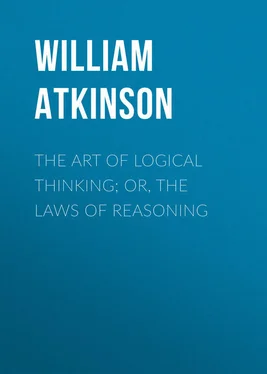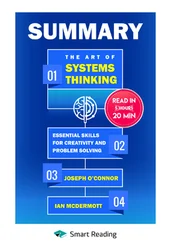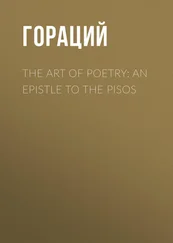William Atkinson - The Art of Logical Thinking; Or, The Laws of Reasoning
Здесь есть возможность читать онлайн «William Atkinson - The Art of Logical Thinking; Or, The Laws of Reasoning» — ознакомительный отрывок электронной книги совершенно бесплатно, а после прочтения отрывка купить полную версию. В некоторых случаях можно слушать аудио, скачать через торрент в формате fb2 и присутствует краткое содержание. Жанр: foreign_antique, foreign_prose, на английском языке. Описание произведения, (предисловие) а так же отзывы посетителей доступны на портале библиотеки ЛибКат.
- Название:The Art of Logical Thinking; Or, The Laws of Reasoning
- Автор:
- Жанр:
- Год:неизвестен
- ISBN:нет данных
- Рейтинг книги:4 / 5. Голосов: 1
-
Избранное:Добавить в избранное
- Отзывы:
-
Ваша оценка:
- 80
- 1
- 2
- 3
- 4
- 5
The Art of Logical Thinking; Or, The Laws of Reasoning: краткое содержание, описание и аннотация
Предлагаем к чтению аннотацию, описание, краткое содержание или предисловие (зависит от того, что написал сам автор книги «The Art of Logical Thinking; Or, The Laws of Reasoning»). Если вы не нашли необходимую информацию о книге — напишите в комментариях, мы постараемся отыскать её.
The Art of Logical Thinking; Or, The Laws of Reasoning — читать онлайн ознакомительный отрывок
Ниже представлен текст книги, разбитый по страницам. Система сохранения места последней прочитанной страницы, позволяет с удобством читать онлайн бесплатно книгу «The Art of Logical Thinking; Or, The Laws of Reasoning», без необходимости каждый раз заново искать на чём Вы остановились. Поставьте закладку, и сможете в любой момент перейти на страницу, на которой закончили чтение.
Интервал:
Закладка:
Let us now consider the mental processes involved in the formation and use of a concept. We have first, as we have seen, the presentation of the crude material from which the concept must be formed. Our attention being attracted to or directed toward an object, we notice its qualities and properties. Then we begin a process of comparison of the object perceived or of our perception of it. We compare the object with other objects or ideas in our mind, noting similarities and differences and thereby leading towards classification with similar objects and opposed dissimilar ones. The greater the range of other objects previously perceived, the greater will be the number of relations established between the new object or idea and others. As we advance in experience and knowledge, the web of related objects and ideas becomes more intricate and complex. The relations attaching to the child's concept of horse is very much simpler than the concept of the experienced adult. Then we pass on to the step of analysis, in which we separate the qualities of the object and consider them in detail. The act of abstraction is an analytical process. Then we pass on to the step of synthesis, in which we unite the materials gathered by comparison and analysis, and thus form a general idea or concept regarding the object. In this process we combine the various qualities discerned by comparison and analysis, and grouping them together as in a bundle, we tie them together with the string of synthesis and thus have a true general conception. Thus from the first general conception of horse as a simple thing, we notice first that the animal has certain qualities lacking in other things and certain others similar to other things; then we analyze the various qualities of the horse, recognized through comparison, until we have a clear and distinct idea of the various parts, qualities and properties of the horse; then we synthesize, and joining together these various conceptions of the said qualities, we at last form a clear general concept of the horse as he is , with all his qualities. Of course, if we later discover other qualities attached to the horse, we add these to our general synthesized concept – our concept of horse is enlarged.
Of course these various steps in the formation and use of a concept are not realized as distinct acts in the consciousness, for the processes are largely instinctive and subconscious, particularly in the case of the experienced individual. The subconscious, or habit mind, usually attends to these details for us, except in instances in which we deliberately apply the will to the task, as in cases of close study, in which we take the process from the region of the involuntary and place it in the voluntary category. So closely related and blended are these various steps of the process, that some authorities have disputed vigorously upon the question as to which of the two steps, comparison or analysis, precedes the other. Some have claimed that analysis must precede comparison, else how could one compare without having first analyzed the things to be compared. Others hold that comparison must precede analysis, else how could one note a quality unless he had his attention drawn to it by its resemblance to or difference from qualities in other objects. The truth seems to lie between the two ideas, for in some cases there seems to be a perception of some similarity or difference before any analysis or abstraction takes place; while in others there seems to be an analysis or abstraction before comparison is possible. In this book we have followed the arrangement favored by the latest authorities, but the question is still an open one to many minds.
As we have seen, the general concept once having been formed, the mind proceeds to classify the concept with others having general qualities in common. And, likewise, it proceeds to generalize from the classification, assuming certain qualities in certain classes. Then we proceed to make still further generalizations and classifications on an ascending and widening scale, including seeming resemblances less marked, until finally we embrace the object with other objects in as large a class as possible as well as in as close and limited a sub-class as possible. As Brooks says: "Generalization is an ascending process. The broader concept is regarded as higher than the narrower concept; a concept is considered higher than a percept; a general idea stands above a particular idea. We thus go up from particulars to generals; from percepts to concepts; from lower concepts to higher concepts. Beginning down with particular objects, we rise from them to the general idea of their class. Having formed a number of lower classes, we compare them as we did individuals and generalize them into higher classes. We perform the same process with these higher classes, and thus proceed until we are at last arrested in the highest class, Being . Having reached the pinnacle of generalization, we may descend the ladder by reversing the process through which we ascend."
From this process of generalization, or synthesis, we create from our simple concepts our general concepts . Some of the older authorities distinguished between these two classes by terming the former "conceptions," and reserving the term "concepts" for the general concepts. Brooks says of this: "The products of generalization are general ideas called concepts . We have already discussed the method of forming conceptions and now consider the nature of the concept itself… A concept is a general idea. It is a general notion which has in it all that is common to its own class. It is a general scheme which embraces all the individuals of the class while it resembles in all respects none of its class. Thus my conception of a quadruped has in it all four-footed animals, but it does not correspond in all respects to any particular animals; my conception of a triangle embraces all triangles, but does not agree in details with any particular triangle. The general conception cannot be made to fit exactly any particular object, but it teems with many particulars. These points may be illustrated with the concepts horse , bird , color , animal , etc."
So we may begin to perceive the distinction and difference between a concept and a mental image . This distinction, and the fact that a concept cannot be imaged , is generally difficult for the beginner. It is important that one should have a clear and distinct understanding regarding this point, and so we shall consider it further in the following chapter.
CHAPTER V.
CONCEPTS AND IMAGES
As we have said, a concept cannot be imaged – cannot be used as the subject of a mental image. This statement is perplexing to the student who has been accustomed to the idea that every conception of the mind is capable of being reproduced in the form of a mental image. But the apparently paradoxical statement is seen as quite simple when a little consideration is given to it.
For instance, you have a distinct general concept of animal . You know what you mean when you say or think, animal . You recognize an animal when you see one and you understand what is meant when another uses the word in conversation. But you cannot form a mental image of the concept, animal . Why? Because any mental image you might form would be either a picture of some particular animal or else a composite of the qualities of several animals. Your concept is too broad and general to allow of a composite picture of all animals . And, in truth, your concept is not a picture of anything that actually exists in one particular, but an abstract idea embracing the qualities of all animals. It is like the algebraic x – a symbol for something that exists, but not the thing itself.
Читать дальшеИнтервал:
Закладка:
Похожие книги на «The Art of Logical Thinking; Or, The Laws of Reasoning»
Представляем Вашему вниманию похожие книги на «The Art of Logical Thinking; Or, The Laws of Reasoning» списком для выбора. Мы отобрали схожую по названию и смыслу литературу в надежде предоставить читателям больше вариантов отыскать новые, интересные, ещё непрочитанные произведения.
Обсуждение, отзывы о книге «The Art of Logical Thinking; Or, The Laws of Reasoning» и просто собственные мнения читателей. Оставьте ваши комментарии, напишите, что Вы думаете о произведении, его смысле или главных героях. Укажите что конкретно понравилось, а что нет, и почему Вы так считаете.












